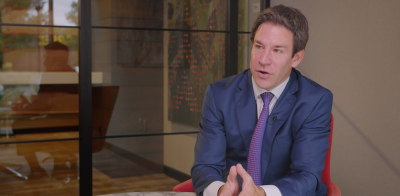The more things change (inflation trending down instead of up), the more they remain the same (Fed still tightening, 60/40 getting hit again) during bear markets.
- Here is a brief summary of what happens time and time again during bear markets commonly referred to as Bear Market Rallies: Markets get temporarily oversold, markets start to bounce, we get short covering, then gamma hedging of options positions, then CTA/trend followers flipping bearish positions, market participants seek a false narrative to justify the rally (inflation actually stopped going up, the Fed is going to stop hiking and then cut in the near future, yields have finally peaked gosh darn it, 18X forward earnings isn’t that expensive, is it? Or at least that’s what the long only equity guy told me, we are about to have a recession which means no more Fed tightening, which for unknown reasons is viewed by some as a positive development for equities, etc.), the few remaining permabulls get sucked in and buy at the worst possible time…and then the cold hard reality of the bear market reasserts itself.
- The current bear market rally checks all of these boxes. And last I checked, nominal GDP and the labor market continue to rock and roll, whereas financial assets remain a choppy, sloppy mess at best…the Galactic Mean Reversion thesis is playing out like clockwork.
- As I have been saying since Q1 of last year, once inflation spreads to labor and services, it’s much harder to break…and guess what? Inflation is now fully embedded in services…the path from a 9% CPI to a 6 handle is potentially easier than from 6% to 4% and 4% to 2%, especially when service inflation ex-shelter just reaccelerated!
- The Fed is still hiking, draining their balance sheet and money supply at a historic rate, leading to another round of duration pain, and equity markets getting hit by multiple compression, a continued expectation of reduced profit margins and future earnings uncertainty…Don’t fight the Fed!
- Markets remain stuck between a rock and hard place: A better labor market and economic growth means more Fed tightening (via front end and balance sheet), more liquidity sucked out of markets, higher yields and lower equity multiples; a weaker labor market and economic growth increases the probability of a recession sooner, which means lower revenue and earnings declines. Investors that myopically cling to excessive levels of beta and duration pine for the days of zero interest rates, infinite quantitative easing1 and money supply growth to artificially boost asset prices. Those days aren’t coming back anytime soon!
- This is all just as easy as following the golden rule of taking market risk: When money supply is growing faster than nominal GDP, consider taking directional risk with confidence. When money supply is growing slower than nominal GDP, consider focusing on capital preservation!
- It is STILL a market environment where you should seek to protect capital, maturely accept mid to high single-digit returns, and focus on “grind it out” strategies…but if you have the tolerance for more risk and volatility, make sure you have ample cash flow and are getting paid for it…in debt AND equity strategies.
Here are some timely strategy ideas and investment considerations listed by volatility and risk profile:
- “Grind it out”: Mid to high single-digit returns seeking lower volatility, beta and duration2 (aka the northwest quadrant of efficient frontier strategies3):
- Senior Secured Commercial Real Estate Debt: Headwinds of lower front end rates for longer and tighter spreads have turned to powerful tailwinds…it’s a lender’s market as far as the eye can see.
- Multi-Strategy Funds that look to implement:
- Interest Only Cash flows from residential mortgages that may offer attractive cash flows and potentially benefit from declining home prices, which may impede refinance activity.
- Yield Curve Steepener exposures that may offer an attractive risk/reward profile for gradual normalization of inflation and Fed policy (may be better than going long equities or making directional interest rate bets).
- Modest Volatility with greater return potential – aka the northern lights (midpoint) of efficient frontier strategies3:
- Private Senior Secured Corporate Middle Market Loans to non-Private Equity Sponsored Businesses.
- A to BBB collateralized loan obligations (CLOs).
- Tactical Trading Opportunities in Agency Residential Mortgage-Backed Securities Passthroughs.
- Private equity secondaries—we’ll have a lot more to say about this shortly!
- Higher volatility with more upside potential—aka northeast quadrant of efficient frontier strategies3:
- BBB- to BB CLOs.
- Listed BDCs that trade at discounts to NAV.
- Listed Opportunistic Closed End Debt Funds that trade at discounts to NAV.
- SMID Cap Equities vs. Large and Mega Cap.
In this sloppy, choppy mess of an environment for financial assets when 60/40 asset allocation is highly challenged, there are timely alternative strategies that may increase income and total return, may decrease risk and volatility, and potentially provide low beta/correlation/duration returns that recently have become more user friendly…the democratization of alternatives marches on to the benefit of average investors!
Investing in alternatives is different than investing in traditional investments such as stocks and bonds. Alternatives tend to be illiquid and highly specialized. In the context of alternative investments, higher returns may be accompanied by increased risk and, like any investment, the possibility of an investment loss. Investments made in alternatives may be less liquid and harder to value than investments made in large, publicly traded corporations. When building a portfolio that includes alternative investments, financial professionals and their investors should first consider an individual’s financial objectives. Investment constraints such as risk tolerance, liquidity needs and investment time horizon should be determined.




